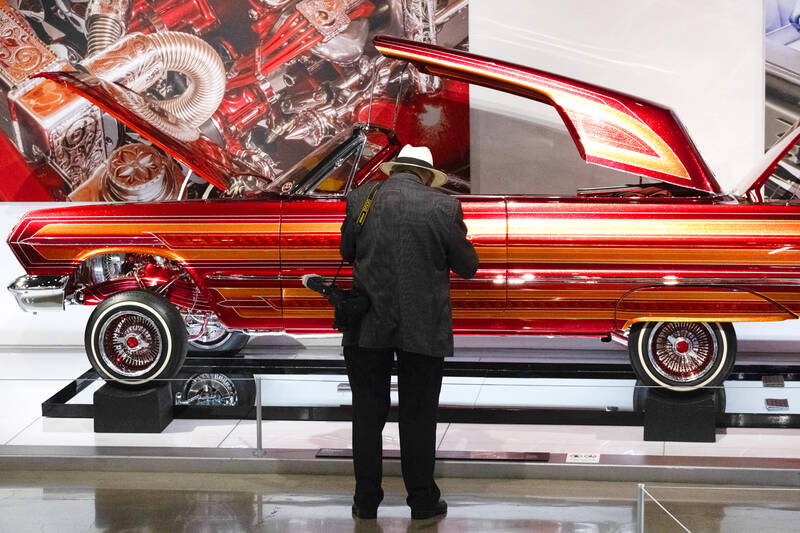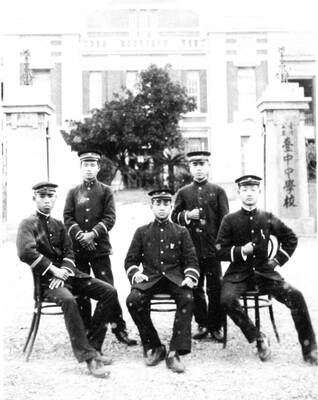Last week a video showing 60-year-old Peter Abbott screaming abuse at TV producer Samantha Isaacs gained a viral audience, after Abbott was found guilty at Poole magistrates court of “using threatening words or behavior to cause alarm, distress or fear of violence.”
In the phone-filmed video, Abbott is seen snarling and shouting as he presses his face up against Isaacs’ car window. He looks as if he’s channeling the Harry Enfield character Angry Frank, so cartoonishly aggressive are his contorted facial expressions and confrontational behavior. Not only did he hammer on Isaacs’ car but he also called her a “slag” and a “whore.”
When another male driver pointed out the terrible optics of bullying a woman, he replied: “She’s a fucking bloody annoying woman.”

Photo: AP
Is the image of Abbott’s dyspeptic face just a freeze frame of a freak incident or a reflection of an unpleasant and growing aspect of modern life? Aaron Balick, a psychotherapist and author of The Psychodynamics of Social Networking, believes that new technologies have ushered in an era in which “there are more ways to express anger” and there is less shame attached to its expression. He also attributes this cultural shift to politicians such as Donald Trump who have “normalized” anger.
According to the Gallup Global Emotions Report, anger around the world has been rising since 2016, with 23 percent of respondents now feeling angry on any given day. Figures are understandably much higher in war zones.
In the UK in recent years shop workers and service staff have reported sharp rises in customer abuse in recent years, and one study showed criminal violence in GP surgeries had doubled in five years (this was back when it was possible to get an appointment in a GP surgery). Reported road-rage incidents also increased by 40 per cent from 2021 to 2022 (although lockdowns would have played a part).

Photo: EPA-EFE
Anger, aggression, abuse and criminal violence are, of course, all different things. There is also a psychiatric classification of “intermittent explosive disorder.” Abbott, who now faces a prison sentence, didn’t claim to be a sufferer, but in his defense he did argue that being angry was not a crime. Psychologists draw a distinction between anger (an emotion) and aggression (a behavior). Clearly the judge decided that Abbott had crossed into the behavioral category.
“Anger is a natural emotion that arises involuntarily,” says Balick. In basic psychological terms anger is a means of alerting another that a boundary has been crossed.
“Obviously you can also be angry on false premises,” adds Balick.
“Saying how you feel is anger,” says Michael Fisher, founding director of the British Association of Anger Management. “It becomes aggressive when you start to scream and shout abuse.”
ROAD RAGE
To witness the transition of anger to aggression, a good place to look is on British roads. In some studies as many as 6 out of 10 drivers report that they have been victims of road rage.
Driving involves several factors that increase the risk of aggression. It’s an often tense activity with an ever-present threat of danger, and the car is a sealed environment, protected from the world outside and yet vulnerable to its sudden intrusions. And like the online world, on the road “there’s no interpersonal complexity,” says Balick, “so it’s easier to be angry at somebody, because you’re not really seeing them as a person.”
“Motor vehicles are a safe space,” says Fisher, “where people can act out without being injured — until someone cuts you up.”
Indeed, rare is the driver who doesn’t maintain some kind of commentary, internal or external, on the incompetence and arrogance of other drivers. To take control of a vehicle is to place yourself in a position of decision-making, not just about routes or gear changes, but often about the moral character of everyone else on the road.
So there exists a heightened sense of judgment even before a conflict arises. What’s more, we tend to be very territorial and proprietorial about our cars, as though they are an extension of ourselves. A 2008 study at Colorado State University found that drivers who personalize their cars with bumper stickers and other signs of territoriality are more prone to anger at the wheel.
None of this is to say that driving, by itself, turns Dr Jekyll into Mr Hyde. Studies show that it is people who are typically aggressive and impulsive in other areas of their lives who are most inclined to road rage. It may not be a surprise that men in their 20s and 30s head this list.
“But road rage doesn’t start when someone cuts you up,” Fisher says.
It has deep roots, he argues, and is a manifestation of unresolved historic trauma “that can lead to aggression or depression, fight or flight.”
Many psychologists talk about an anger or aggression cycle that has distinct stages: trigger, escalation, crisis, recovery, depression. However, Balick says that what is often ignored is that “it feels good in the moment to express the energy that comes with anger.” There’s the thrill of increased heartbeat and senses on alert that can be addictive. “People react energetically to this hot emotion to the degree that they’re not forecasting the consequences,” he says.
ANONYMITY
Angry car drivers and social media warriors also find themselves empowered by a greater sense of anonymity. In 1969, the Stanford psychologist Philip Zimbardo conducted an experiment in which students administering electric shocks were found to be more sadistic when their identities were concealed by a hood. Zimbardo, as he put it, wanted to show “the ease with which ordinary people could be led to engage in antisocial acts by putting them in situations where they felt anonymous.”
The same process takes places in crowds, where aggression can also be infectious. To what degree these zones of poor behavior affect conduct in everyday life is almost impossible to establish. But it’s a reasonable working assumption that trolls with names like Ratface6788891 might carry some of their online enmity into the real world. For one thing, the ubiquity of the smartphone has brought the virtual world into all aspects of the real one. Balick is in no doubt that the internet age has also lowered social barriers against anger. As he has put it, “the capacity for emotional contagion of anger has increased, certainly you see anger crossing populations much more easily.”
Yet the smartphone can also expose people. All it takes is a cameraphone and a vehicle registration number to destroy anonymity, as Abbott discovered. He claimed in court that he would have behaved exactly the same way “with anyone, whatever gender, size or age they are”, as if it was a matter of principle. As with online anger, there is often an element of virtuous indignation at play in the angry person’s self-perception. For would he really have appeared so threatening if the driver he was confronting was half his age and twice his size?
Whatever the truth, anger management seems like an option Abbott and those like him should consider. Fisher claims that 88 percent of his course participants report positive effects after 18 months. At the core of his teaching are two fundamentals: first, take a look at the big picture, and second, don’t take anything personally.
In the bigger picture of driving a car, for example, there is always likely to be some unforeseen obstacle. And if people beep their horn at you, it may be because you’ve done something wrong or because they are hyperactive horn-beepers, but either way, says Fisher, “don’t make it about you”.
Threatening forms of anger are always focused on another person but in reality they’re almost invariably about the aggressor. Perhaps Abbott will think about that when he calms down.

In the March 9 edition of the Taipei Times a piece by Ninon Godefroy ran with the headine “The quiet, gentle rhythm of Taiwan.” It started with the line “Taiwan is a small, humble place. There is no Eiffel Tower, no pyramids — no singular attraction that draws the world’s attention.” I laughed out loud at that. This was out of no disrespect for the author or the piece, which made some interesting analogies and good points about how both Din Tai Fung’s and Taiwan Semiconductor Manufacturing Co’s (TSMC, 台積電) meticulous attention to detail and quality are not quite up to

April 28 to May 4 During the Japanese colonial era, a city’s “first” high school typically served Japanese students, while Taiwanese attended the “second” high school. Only in Taichung was this reversed. That’s because when Taichung First High School opened its doors on May 1, 1915 to serve Taiwanese students who were previously barred from secondary education, it was the only high school in town. Former principal Hideo Azukisawa threatened to quit when the government in 1922 attempted to transfer the “first” designation to a new local high school for Japanese students, leading to this unusual situation. Prior to the Taichung First

Chinese Nationalist Party (KMT) Chairman Eric Chu (朱立倫) hatched a bold plan to charge forward and seize the initiative when he held a protest in front of the Taipei City Prosecutors’ Office. Though risky, because illegal, its success would help tackle at least six problems facing both himself and the KMT. What he did not see coming was Taipei Mayor Chiang Wan-an (將萬安) tripping him up out of the gate. In spite of Chu being the most consequential and successful KMT chairman since the early 2010s — arguably saving the party from financial ruin and restoring its electoral viability —

The Ministry of Education last month proposed a nationwide ban on mobile devices in schools, aiming to curb concerns over student phone addiction. Under the revised regulation, which will take effect in August, teachers and schools will be required to collect mobile devices — including phones, laptops and wearables devices — for safekeeping during school hours, unless they are being used for educational purposes. For Chang Fong-ching (張鳳琴), the ban will have a positive impact. “It’s a good move,” says the professor in the department of